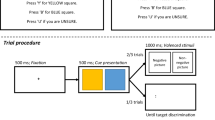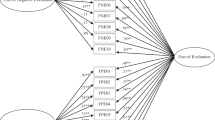Abstract
Anxiety is a ubiquitous psychological phenomenon, being part of everyday emotional experience for most people, while also being one of the most frequently encountered symptoms of neurotic disturbance. Despite this, anxiety remains difficult to define, or even to establish as a distinctive and unitary emotion. Factor analytic studies of mood state descriptors suggest that bipolar negative and positive affect dimensions emerge as orthogonal factors. Anxiety descriptors (e.g. nervous, fearful) appear to define the high negative affect pole, and are distinguished from depression by remaining neutral rather than being low on the positive affect dimension (Tellegen, 1985). On the other hand Peter Lang (e.g. 1985) and others have forcefully argued that a necessary first step should be to specify the data of anxiety; that is, the variables from which the existence of anxiety is to be inferred. These data consist not only of language-based descriptors, but also include physiological arousal measures and behavioural reactions (e.g. avoidance).
Access this chapter
Tax calculation will be finalised at checkout
Purchases are for personal use only
Preview
Unable to display preview. Download preview PDF.
Similar content being viewed by others
References
Baddeley, A. D., & Hitch, G. (1974). Working memory. In: G. H. Bower (Ed.), The psychology of learning and motivation, Vol 8. London: Academic Press.
Blaney, P. H. (1986). Affect and memory: a review. Psychological Bulletin, 99, 229–246.
Borkovec, T. D., Robinson, E., Pruzinsky, T., & DePree, J. A. (1983). Preliminary exploration of worry: Some characteristics and processes. Behaviour Research and Therapy, 21, 9–16.
Bower, G. (1981). Mood and memory. American Psychologist, 36, 129–148.
Bower, G. (1983). Affect and cognition. Philosophical transactions of Royal Society London, 302, 387–402.
Bradley, B. & Mathews, A. M. (1983). Negative self-schemata in clinical depression. British Journal of Clinical Psychology, 22, 173–181.
Butler, G., & Mathews, A. M. (1983). Cognitive processes in anxiety. Advances in Behaviour Research and Therapy, 5, 51–62.
Dixon, N. (1981). Preconscious processing. Chichester: Wiley.
Eysenck, M. W. (1982). Attention and arousal. Berlin: Springer-Verlag.
Eysenck, M. W., MacLeod, C., & Mathews, A. M. (1987). Cognitive functioning and anxiety. Psychological Research, 49, 189–195.
Geller, V., & Shaver, P. (1976). Cognitive consequences of self-awareness. Journal of Experimental Psychology, 12, 99–108.
Gray, J. A. (1982). The neuropsychology of anxiety. New York: Oxford University Press.
Hamilton, V. (1983). The cognitive structures and processes of human motivation and personality. Wiley: Chichester.
Hasher, L., Rose, K. C., Zacks, R. T., Sanft, H., & Doren, B. (1985). Mood, recall and selectivity effects in normal college students. Journal of Experimental Psychology: General, 114, 104–118.
Holender, D. (1986). Semantic activation without conscious identification in dichotic listening, parafoveal vision, and visual masking: A survey and appraisal. The Behavioral and Brain Sciences, 9, 1–66.
Kahneman, D., Slovic, P., & Tversky, A. (1982). Judgement under uncertainty: Heuristics and biases. Cambridge: Cambridge University Press.
Lang, P. J. (1985). The cognitive psychophysiology of emotion: fear and anxiety. In: Anxiety and the anxiety disorders, A. H. Turna & J. D. Maser (Eds.), Hillsdale, NJ: Lawrence Erlbaum:
MacLeod, C., Mathews, A. M., & Tata, P. (1986). Attentional bias in emotional disorders. Journal of Abnormal Psychology, 95, 15–20.
Marcel, A. J. (1983). Conscious and unconscious perception: Experiments on visual masking and word recognition. Cognitive Psychology, 15, 197–237.
Mathews, A. M., & MacLeod, C. (1985). Selective processing of threat cues in anxiety states. Behaviour Research and Therapy, 23, 563–569.
Mathews, A. M., & MacLeod, C. (1986). Discrimination of threat cues without awareness in anxiety states. Journal of Abnormal Psychology, 95, 131–138.
Mogg, K., Mathews, A. M., & Weinman, J. (1987). Memory bias in clinical anxiety. Journal of Abnormal Psychology, 96, 94–98.
Norman, D. A., & Bobrow, D. G. (1975). On data-limited and resource-limited processes. Cognitive Psychology, 7, 44–64.
Oatley, K., & Johnson-Laird, P. N. (1987). Towards a cognitive theory of the emotions. Cognition and Emotion, 1, 29–50.
Tellegen, A. (1985). Structures of mood and personality and their relevance to assessing anxiety, with an emphasis on self-respect. In: Anxiety and the anxiety disorders, A. H. Turna & J. D. Maser (Eds.), Hillsdale, NJ: Lawrence Erlbaum.
Author information
Authors and Affiliations
Editor information
Editors and Affiliations
Rights and permissions
Copyright information
© 1988 Kluwer Academic Publishers
About this chapter
Cite this chapter
Mathews, A. (1988). Anxiety and the Processing of Threatening Information. In: Hamilton, V., Bower, G.H., Frijda, N.H. (eds) Cognitive Perspectives on Emotion and Motivation. NATO ASI Series, vol 44. Springer, Dordrecht. https://doi.org/10.1007/978-94-009-2792-6_11
Download citation
DOI: https://doi.org/10.1007/978-94-009-2792-6_11
Publisher Name: Springer, Dordrecht
Print ISBN: 978-94-010-7756-9
Online ISBN: 978-94-009-2792-6
eBook Packages: Springer Book Archive




